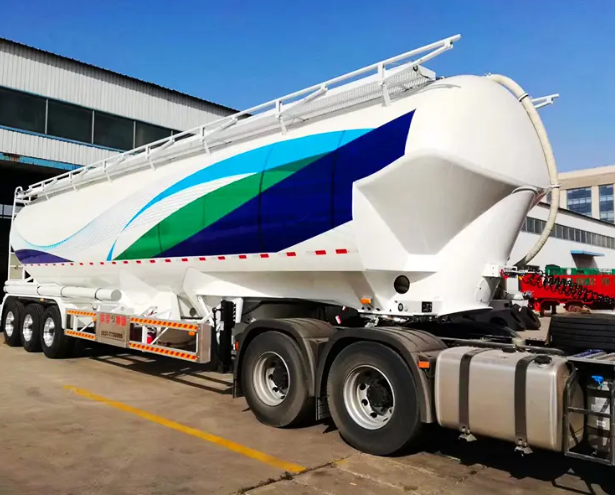In the realm of heavy-duty transportation, the tank trailer plays a pivotal role in the safe and efficient movement of liquids and gases. Whether transporting fuel, chemicals, or food-grade liquids, understanding the intricacies of loading these massive vessels is critical. A common question arises among operators and logistics professionals: Why should a tank trailer not be loaded completely full? This question delves into the complex interplay of physics, safety regulations, and engineering principles that govern the operation of tank trailers.
The Structure and Mechanics of Tank Trailers
To comprehend why overfilling a tank trailer is ill-advised, one must first understand the design and mechanics of these vehicles. Tank trailers are cylindrical containers mounted on a trailer chassis, engineered to carry liquid or gaseous loads. Their design accommodates the containment of various substances under specific pressure and temperature conditions. The cylindrical shape is optimal for withstanding internal pressures and minimizing stress concentrations.
Internally, tank trailers may feature baffles—internal bulkheads with openings—that help reduce the movement of liquid inside the tank. This movement, known as "liquid surge," can significantly impact the stability and handling of the vehicle. Despite these design considerations, certain limitations persist, particularly related to loading capacity and volume.
The Physics of Liquid Movement: Surge and Slosh
One of the primary reasons tank trailers are not loaded to full capacity is to mitigate the effects of liquid surge and slosh. When a tank is completely full, any movement—such as starting, stopping, or turning—can cause the liquid to exert additional forces on the walls of the tank. This phenomenon can lead to increased stress on the tank structure and compromise the vehicle's stability.
Moreover, a completely full tank leaves no room for the liquid to expand or move, which can lead to pressure build-up, especially if the liquid is volatile or expands with temperature changes. By leaving some space, known as "ullage," operators allow the liquid to move safely within the tank without causing undue stress or pressure.
Impact on Vehicle Stability
The dynamic forces exerted by a moving liquid can cause a shift in the vehicle's center of gravity. This shift can lead to rollovers or loss of control, particularly during abrupt maneuvers or emergency braking. Studies have shown that vehicles transporting liquids have a higher rollover rate compared to those carrying solid cargo due to liquid surge.

Thermal Expansion of Liquids
Liquids can expand or contract with temperature fluctuations. This is especially true for substances like fuels or chemicals, which can have significant thermal expansion coefficients. If a tank trailer is loaded to its maximum capacity without accounting for temperature-induced volume changes, the expanding liquid can create excessive internal pressure. This pressure can lead to tank deformation, leaks, or even catastrophic failure.
For instance, gasoline can expand by approximately 1% for every 15°F increase in temperature. In a 10,000-gallon tank trailer, this could result in an additional 100 gallons of expansion, necessitating adequate ullage space to accommodate this change safely.
Regulations and Safety Standards
Regulatory bodies such as the U.S. Department of Transportation (DOT) and the Federal Motor Carrier Safety Administration (FMCSA) have established guidelines for the safe loading of tank trailers. These regulations mandate that tanks should not be filled beyond a certain percentage of their capacity, often around 95%, to prevent overfilling and allow for thermal expansion.
Additionally, hazardous materials regulations require carriers to consider the specific gravity and expansion characteristics of the liquid being transported. Compliance with these regulations is not only a legal obligation but also a critical component of operational safety and risk management.
International Standards
Countries worldwide have similar regulations in place, often aligned with recommendations from organizations such as the United Nations Economic Commission for Europe (UNECE). The International Maritime Dangerous Goods (IMDG) Code also provides guidelines for the transportation of hazardous liquids, emphasizing the importance of not overfilling tanks.
Real-World Incidents and Case Studies
Historical data underscores the dangers of overfilled tank trailers. There have been numerous incidents where the lack of ullage space led to spills, environmental damage, and even explosions. For example, a notable accident occurred when a fuel tanker, filled to capacity without accounting for thermal expansion, ruptured due to pressure build-up, resulting in a significant spill and fire hazard.
These incidents highlight the critical need for adherence to proper loading procedures and the potential consequences of neglecting them. The financial, legal, and reputational damages from such events can be devastating for companies and operators alike.
Best Practices for Loading Tank Trailers
To mitigate the risks associated with overfilling, industry experts recommend several best practices. These include:
Calculating the appropriate fill volume based on the liquid's thermal expansion coefficient and the expected temperature range during transport.
Utilizing automatic shut-off systems during loading to prevent overfill.
Regularly inspecting and maintaining tank trailers to ensure structural integrity.
Training operators and drivers on the importance of leaving ullage space and the risks of overfilling.
Employing baffles and compartments within the tank to reduce liquid movement and improve stability.
Companies like GDSS TRAILER, a professional designer and builder in the field since 2009, emphasize the importance of safety features and compliance in their tank trailer designs. By integrating advanced engineering practices, they support safer transportation of liquids across various industries.
Conclusion
Loading a tank trailer completely full poses significant risks due to the potential for liquid surge, thermal expansion, and regulatory non-compliance. Understanding these risks is essential for anyone involved in the transportation of liquid goods. By adhering to best practices and leveraging the expertise of industry leaders, operators can ensure the safe and efficient movement of liquids. The tank trailer remains an indispensable asset in global logistics, and its safe operation is paramount to the industry's continued success.


















